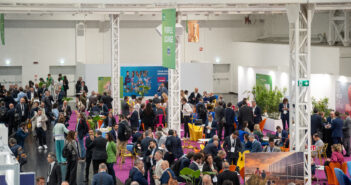Reviewed by Greg Clark
The Austrian capital Vienna (1.73 million inhabitants) represents together with Bratislava (the capital of Slovakia with a population of 0.42 million) and Brno (the second biggest Czech city with a population of 0.38 million) the heart of the Central European Region, centrope – this means for Vienna a market of 6.5 million consumers within a daytrip distance.
During the last two decades Vienna has undertaken a lot of improvements in urban development and is therefore well known as a city of high quality of living and working. Amongst others the diversity of its population – 49% have migrant background – is one of the factors responsible for growing vibrancy of the city and the internationalisation of Vienna. Moreover – upgrades in quality and district diversification – are key characteristics of the development of the retail market and shopping culture in Vienna.
Four trends are significant:
- Concentration of new luxury in the city centre
- Development of city shopping centres at new station projects
- Rising attractiveness of some shopping streets
- Competition by peripheral retail parks and shopping centre
Concentration of new luxury in the city centre
Hand in hand with the enlargement of pedestrian zones in prime locations of the city centre, large-scale retail properties are being developed: the “Golden U” (the first shopping addresses in Vienna at Kärtner Straße, Graben and Kohlmarkt) will be soon completed by the neighbouring “Golden Quarters” at Tuchlauben and Am Hof, including the new Park Hyatt Hotel. A first remarkable signal of modernisation has been set by the recent refurbishment of Kärnterstraße and Graben and 2011 by the “Weltstadthaus” (11,800 sqm), which has been designed by David Chipperfield for Peek & Cloppenburg in the Kärntner Straße. The “Golden Quarters” (11,500 sqm) will follow now for Prada, Armani, Louis Vutton and others. The demand for modern retail space in the city centre raises prime rates per sqm up to € 340 (the average in the city centre lies between € 140-270) because of limited offers of appropriate buildings.

Mixed use retail and leisure: What happens next? – White Paper
Development of city shopping centres at new station projects
Vienna’s transport infrastructure undergoes a massive modernisation – the international and regional accessibility by train will be finally reorganised 2012/2013 by the opening of the new “Bahnhof Wien Mitte” and the new central through station “Hauptbahnhof Wien”. The third station “BahnhofCity Wien West” (with about 17,000 sqm retail space) has been already reopened last year. All three station projects together will offer retail space of about 65,000 sqm (Wien Mitte will offer about 28,000 sqm for retail). From an urban development perspective most important will be the Vienna Central Station because of its impact for the implementation of a new city district in the surrounding area of the station during the next ten years.
Rising attractiveness of some shopping streets
Main shopping streets as Mariahilfer Straße at the border between 6th and 7th district play a vital role in the recovery of urban districts and for the quality of local amenities. Best accessibility by public transport (underground U3) and the transformation of a big part of the street into a pedestrian zone in the nearest future are responsible for increasing rents for retail and office space in this area (€ 60-130 per sqm). Due to its favourable location between the Museums Quarter and the Naschmarkt – Vienna’s best-known market with around 120 market stands and restaurants – the inner part of Mariahilfer Straße affects the establishment of a growing segment of an upcoming scene and new trendy shops in the surrounding streets.
Competition by peripheral retail parks and shopping centres
Other high streets, in particular in the outer districts, do not develop that well because of hard competition with shopping centres at the periphery, at both sides of the city border. Although the boom of big shopping centres is decreasing, many medium sized developments still take place. Europeans biggest shopping centre “SCS Shopping City Süd” (173,000 sqm) in the south of Vienna is still growing and in a process of refurbishment, in the North of the City (also beyond the city border) the G3 Shopping Ressort Gerasdorf will open soon with 70,000 sqm, competing the Donauzentrum (75,000 sqm) in the neighbouring transdanubian part of the city.
An unchanged and critical problem since decades of these shopping centres is that consumers can reach them nearly exclusively by car. Efforts of the City of Vienna to reverse this ongoing trend fail because of the lack of clear and effective co-operation competences between the provinces of Vienna and Lower Austria in this metropolitan region.
By Dr. Eugen Antalovsky, CEO, EuropaForum, Vienna.
Top image credit : Photobank gallery


![[NEW] MAPIC interview: In conversation with Sostrene Grene CEO Mikkel Grene Sostrene-Grene](https://www.beyondretailindustry.com/wp-content/uploads/2024/03/Inside-Sostrene-Grene-store-5-1-351x185.jpg)
![[NEW] Women in Retail: 24 trailblazers for 2024 Women in retail](https://www.beyondretailindustry.com/wp-content/uploads/2024/03/image-1-351x185.png)
